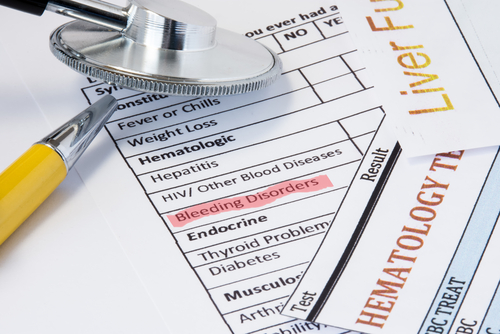Excess Weight, Obesity Affecting More Hemophilia Patients, Study Shows

About a third of European and North American hemophilia patients are overweight or obese, which is associated with increased joint dysfunction and chronic pain, according to a recent review study.
The review, “Obesity in the global haemophilia population: prevalence, implications and expert opinions for weight management,” was published in the journal Obesity Reviews.
According to the World Health Organization, obesity has tripled in the last 30 years, affecting about 13 percent of adults worldwide. Also, 39 percent of adults are considered overweight.
Excess weight and obesity may be harmful to hemophilia patients, as there is added pressure on the joints, making bleeds more likely. Repeated joint bleeding can lead to hemophilic arthropathy, a debilitating condition characterized by joint impairment, chronic pain, and diminished quality of life.
While increasing evidence has highlighted the negative impact of excess weight and obesity among people with hemophilia, its frequency in this patient population remains unclear.
Researchers evaluated the frequency and clinical impact of obesity/overweight in the global hemophilia patient population.
The review of published studies within the last 15 years identified 90 relevant studies, of which 28 had data on the number of hemophilia patients who were overweight or obese, or the percentage among that population.
Analysis on those 28 studies showed that 17% of hemophilia patients are estimated to be overweight/obese, and that this number increased to 31% when the European and North American populations were analyzed separately.
The results also revealed that overweight/obesity is more frequent in adults (43.3%) than in pediatric (26.9%) hemophilia patients. The prevalence of these conditions is higher in European (49.1%) rather than in North American (38.5%) adults, but inverted trends were found for children (18.8% in Europe vs 30.6% in North America).
Also, over a period of 10 years, overweight/obesity showed a 20% increase in adults and a 40% increase in children with hemophilia.
This data points to a significant occurrence of overweight/obesity in European and North American patients with hemophilia, particularly in the adult population, and a rapid increase in its frequency in pediatric patients over a relatively short period.
While these frequencies seem to be similar to the ones reported for the non-hemophilia population, the fact that data outside Europe and North America is limited and that most hemophilia studies do not report this type of information may mean that the worldwide frequency of clinically significant excess weight in hemophilia patients is underestimated.
Additional studies are needed to assess the global frequency of overweight/obesity in hemophilia patients.
“Although hemophilia itself is unlikely to be a causal factor for obesity, the disease may indirectly lead to weight gain or difficulty in weight loss if patients reduce levels of exercise due to muscle/joint pain, restricted range of movement or fear of bleeding,” the researchers said.
The team also found that overweight/obesity in these patients may reduce venous access for infusion of coagulation factor, increase the risk of impaired muscle strength and function, joint surgery, and cardiovascular problems, and negatively affect their psychological well-being (with studies reporting more than 30% of patients showing depression).
The researchers noted that while additional studies are needed to better understand the clinical impact of overweight/obesity in these patients, these conclusions already highlight the importance of weight management.
They proposed a series of additional methods to assess overweight/obesity in hemophilia patients, as well as recommendations to prevent or manage overweight/obesity in adult and pediatric patients.
“The prevention and management of overweight/obesity in the context of [hemophilia] has additional considerations with regard to patient education, psychological support and, perhaps most importantly, engagement in physical exercise,” they concluded.






